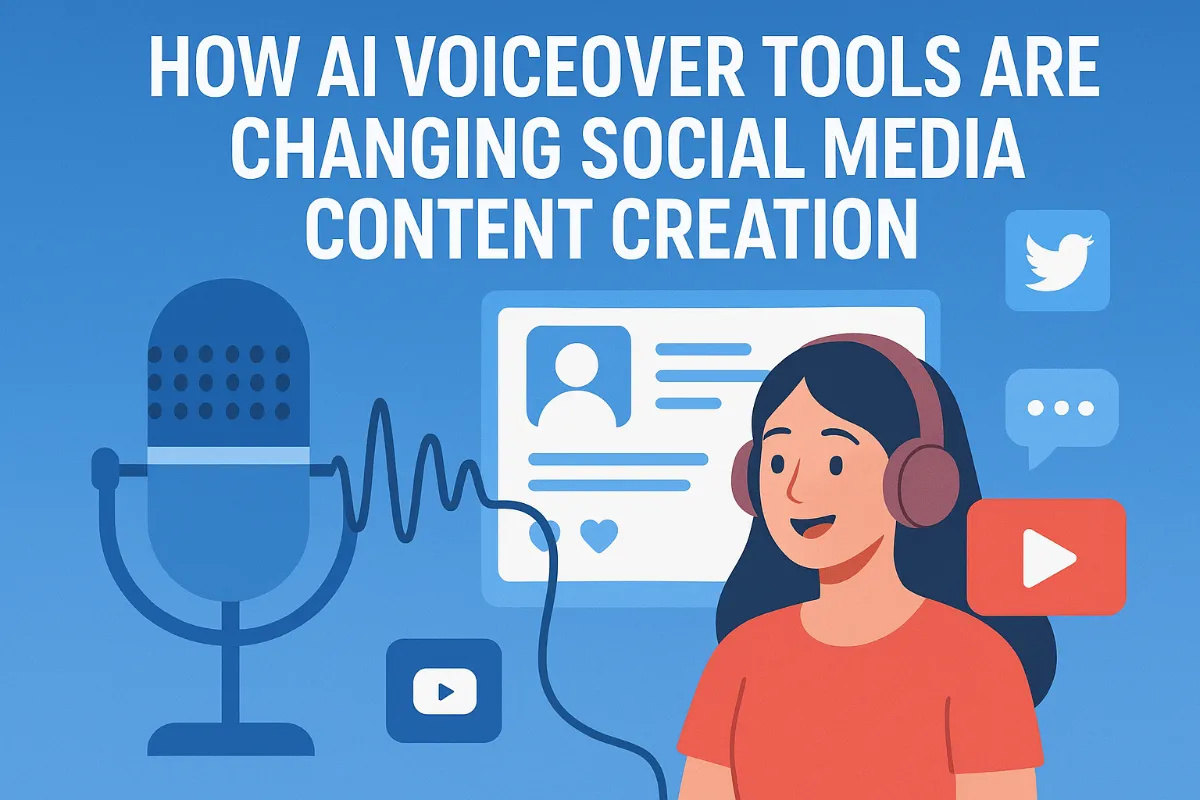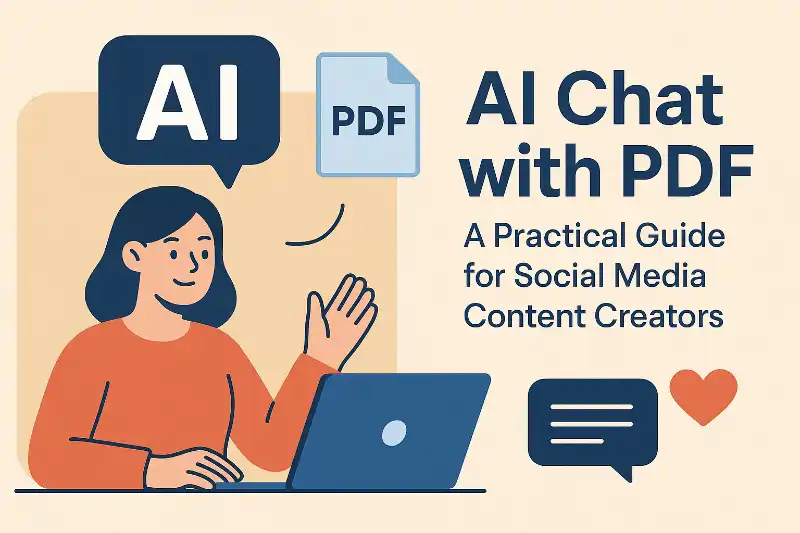Navigating the Ethical Minefield: A Content Creator's Guide to AI Social Bots
Understanding AI Social Bots and Their Impact
AI social bots are rapidly changing content creation, but what are they and how do they truly affect us? Let's break down the essentials of these digital assistants and their place in today's social media landscape.
AI social bots are software applications that use artificial intelligence to automate tasks on social media platforms. These bots can:
- Generate content: For example, a bot can draft a social media caption for a new product launch, like "✨ Introducing our latest innovation! Get ready to experience [Product Name] – launching next week! #NewProduct #Innovation" or even create a blog post outline for a topic like "The Future of Remote Work," suggesting sections such as "Introduction," "Benefits of Remote Work," "Challenges and Solutions," and "Conclusion."
- Engage with users: A bot might respond to a comment like "Great post!" with a friendly "Thanks for reading! We're glad you enjoyed it!" or automatically like posts that mention specific keywords related to your brand.
- Manage communities: They can moderate discussions by automatically removing spam or inappropriate comments, and respond to common inquiries like "What are your business hours?" with "We're open Monday to Friday, 9 AM to 5 PM."
- Conduct marketing campaigns: Bots can schedule and post promotional content, like "Don't miss our flash sale! Get 20% off all items for the next 24 hours. Shop now: [Link]"
These functions are powered by technologies like natural language processing (NLP) and machine learning (ML), enabling bots to understand and generate human-like text.
For content creators, AI social bots offer a mix of allure and risk.
Benefits:
- Efficiency: Bots can automate repetitive tasks, freeing up creators' time.
- Scalability: They enable 24/7 engagement, expanding reach exponentially.
- Consistent Output: AI ensures a steady stream of content, maintaining audience engagement.
Potential Risks:
- Algorithmic Bias: Bots can perpetuate existing biases in training data, leading to skewed or unfair content.
- Lack of Human Touch: Over-reliance on automation can result in impersonal content that feels inauthentic.
- Ethical Concerns: Issues like misinformation and manipulation become amplified with AI-driven content.
As stated in "Top 10 Ethical Considerations for AI Projects" by Project Management Institute, embedding ethics into AI planning helps proactively address challenges.
Content creators face the challenge of harmonizing the efficiency of AI with the authenticity that audiences crave. Striking this balance is crucial for building trust and maintaining a genuine connection.
Navigating this new terrain requires tools that not only enhance productivity but also uphold ethical standards.
The Core Ethical Considerations
AI social bots present exciting possibilities, but also raise critical ethical questions that content creators must address. What are the core ethical considerations when using these tools, and how can creators navigate this complex landscape?
One of the most important ethical considerations is transparency. Audiences deserve to know when AI assists in content creation, and content creators should be upfront about it.
- Clearly disclose the use of AI in generating content. This can be done through simple disclaimers, such as "This content was created with the assistance of AI" or "AI-assisted content."
- Authenticity is key. Even when using AI, maintain a genuine voice and tone. Avoid being deceptive or misleading about the level of human involvement.
As stated in the Ethics Guidelines for AI from the European Parliament, transparency builds trust and AI systems should not represent themselves as humans.
Another crucial aspect is privacy. Protecting user data is paramount, especially when AI social bots handle sensitive information.
- Comply with data privacy regulations like GDPR and CCPA. These regulations set strict rules for collecting, storing, and using personal data.
- Implement robust security measures to protect user data from unauthorized access, breaches, and misuse.
- Be transparent about data collection practices. Inform users about the types of data collected, how it's used, and their rights to access, modify, or delete their data.
UNESCO's Recommendation on the Ethics of Artificial Intelligence emphasizes the protection of human rights and dignity, which includes safeguarding user data.
Consider a healthcare content creator using an AI social bot to generate posts about mental health. They need to ensure that:
- They disclose the use of AI in their content.
- They protect patient data by complying with HIPAA regulations. HIPAA, or the Health Insurance Portability and Accountability Act, is crucial here because it mandates the protection of Protected Health Information (PHI), which could be inadvertently shared or misused if not handled carefully by AI.
- They avoid perpetuating biases or stereotypes in their AI-generated content.
- They are cautious about sharing AI health app data without consent. This refers to data generated by health-tracking apps or AI diagnostic tools. Sharing this without explicit user consent is a major privacy violation, as highlighted in articles by institutions like the National Center for Biotechnology Information, which often discuss the ethical implications of health data usage.
Navigating the ethical considerations of AI social bots requires a commitment to transparency, privacy, and fairness. By prioritizing these values, content creators can harness the power of AI while maintaining audience trust and upholding ethical standards. The next section will discuss strategies for identifying and mitigating algorithmic bias.
Combating Algorithmic Bias
Algorithmic bias is a growing concern for content creators using AI social bots. These biases can perpetuate stereotypes and discrimination, undermining the authenticity and fairness of content.
AI's ability to amplify these biases demands vigilant strategies for identifying and mitigating them. Let's explore practical steps to ensure your AI-driven content remains ethical and inclusive.
Algorithmic bias occurs when an AI system makes unfair or discriminatory decisions. This often happens because the data used to train the AI reflects existing societal biases.
For example, if an AI social bot is trained primarily on data that portrays certain demographics negatively, it may inadvertently generate content that reinforces those negative stereotypes. Recognizing this is the first step in combating it.
Here are some strategies for identifying bias in AI social bots:
- Examine Training Data: Scrutinize the datasets used to train the AI. Look for skewed representation, outdated information, and inherent prejudices.
- Test Diverse Inputs: Input a wide range of prompts and scenarios to the bot. Analyze the outputs for any patterns of discrimination.
- Monitor User Feedback: Pay close attention to user comments and complaints. They can highlight biases that automated testing might miss.
Once you've identified potential biases, you can take steps to mitigate them.
- Diversify Training Data: Ensure your training datasets include a balanced representation of different demographics, viewpoints, and experiences. This helps the AI learn from a broader spectrum of reality.
- Implement Fairness Metrics: Use quantitative metrics to evaluate the AI's output for fairness. Tools like disparate impact analysis can help identify disparities in outcomes for different groups, ensuring the AI isn't unfairly favoring or disadvantaging anyone.
- Regularly Retrain and Audit: Continuously monitor the AI's performance and retrain it with updated, debiased data. Conduct regular audits to catch new biases that may emerge over time.
AI social bots can inadvertently create echo chambers and filter bubbles. These reinforce existing beliefs and limit exposure to diverse viewpoints.
To avoid this:
- Program your AI to actively seek out and share content from a wide range of sources and perspectives. By doing this, the bot exposes users to different viewpoints, actively breaking the cycle of reinforcement that defines echo chambers.
- Design the bot to facilitate respectful discussions and challenge echo chambers by presenting different viewpoints. Encouraging open dialogue allows for the respectful exchange of ideas, which can challenge existing beliefs and broaden understanding.
- Monitor Engagement Metrics: Track which types of content resonate with different audiences to ensure inclusivity.
For content creators, the key is to approach AI social bots with a critical eye, proactively addressing biases and promoting fairness. As noted earlier, transparency is a vital component of ethical AI.
The next section explores the impact of AI on human creativity and labor.
The Impact on Human Creativity and Labor
The rise of AI social bots has sparked debates about their impact on creativity and the job market. How can content creators navigate this new landscape to ensure AI serves as a tool for enhancement rather than replacement?
AI should augment human creativity, not overshadow it. Content creators can use AI to streamline tasks, research topics, and generate ideas, but human oversight remains essential for artistic direction and originality.
- Augmentation: AI algorithms can analyze data to identify trending topics, optimize content for search engines, and even draft basic text. However, the final product should still reflect the creator's unique perspective and voice.
- Oversight: Humans must guide AI, ensuring the output aligns with ethical standards and brand values. This includes fact-checking, editing, and adding the "human touch" that resonates with audiences.
- Expertise: Content creators should continue honing their skills in storytelling, visual design, and audience engagement. These areas require human intelligence, creativity, and emotional understanding that AI cannot fully replicate.
The increasing use of AI in content creation raises concerns about job displacement. However, AI also offers opportunities for new roles and skill sets.
- Adaptation: Content creators should embrace AI as a tool and focus on developing skills that complement AI capabilities, such as strategic thinking, creative direction, and audience engagement.
- New Roles: The AI era will give rise to new roles, such as AI content strategists, AI-assisted editors, and prompt engineers, who specialize in crafting effective prompts for AI tools.
- Training: Investing in training and education is crucial to adapt to the changing landscape. Content creators can explore courses and workshops on AI tools, data analysis, and content strategy to remain competitive.
Ethical considerations must guide the use of AI in content creation. As outlined in the Ethics Guidelines for AI from the European Parliament, transparency is paramount, and systems should not impersonate humans.
Content creators using AI should be transparent about AI's role in their work. This builds trust with their audience and avoids misleading them.
The evolving role of AI in content creation requires content creators to adapt their skills and embrace new technologies.
Practical Steps for Ethical Implementation
Crafting a solid ethical framework ensures AI social bots enhance, not hinder, your content creation efforts. It's about setting the guardrails that keep your AI initiatives aligned with your values and your audience's trust.
Developing a code of ethics for AI social bot usage is the first step. This code should outline the core principles you want to uphold, such as transparency, fairness, and respect for privacy.
- Establish clear guidelines that define appropriate content generation. For instance, specify that "AI-generated content must be fact-checked by a human before publication" or "AI should not be used to generate or spread hate speech or discriminatory remarks."
- Outline acceptable interaction protocols, including disclosing AI involvement in content and engagement.
- Regularly review and update your ethical framework to address new challenges. As AI technology evolves, so too should your ethical guidelines.
Assigning responsibility for monitoring AI social bot activity ensures that ethical guidelines are followed. Implementing oversight mechanisms is crucial for maintaining accountability.
- Establish clear reporting lines for ethical concerns. This ensures issues are addressed promptly and effectively.
- Conduct regular audits to check compliance with ethical standards. These audits should assess both the content and the bot's interactions.
- Assign responsibility for monitoring AI social bot activity. Designate specific individuals or teams to keep a close watch on how the bots are performing and interacting.
As the Project Management Institute notes, embedding ethics into AI planning helps proactively address challenges.
Practical implementation requires a commitment from the entire team. A clear ethical framework, coupled with diligent oversight, ensures AI social bots are used responsibly.
The Legal Landscape
AI social bots must comply with the law to be trustworthy tools for content creators. Understanding the legal landscape is crucial for avoiding potential liabilities and ensuring ethical practices.
Content creators using AI social bots must be aware of several key legal areas. These include data privacy laws, such as GDPR and CCPA, which govern how personal data is collected, stored, and used.
Advertising regulations, like those enforced by the Federal Trade Commission (FTC), also play a role. These regulations require transparency and prohibit misleading or deceptive advertising practices.
Content creators should remain informed about evolving legal developments, especially in AI. For instance, emerging trends include debates around AI copyright for generated content and establishing liability for AI actions. To stay updated, creators can follow AI law blogs, attend relevant webinars, or subscribe to newsletters from legal experts specializing in technology.
Navigating the legal landscape includes adhering to the specific guidelines and policies of each social media platform. For example, platforms like Facebook, Instagram, X, TikTok, and YouTube have rules about content authenticity, intellectual property, and user privacy.
It is essential to stay updated on these platform-specific policies. Failure to comply can result in content removal, account suspension, or legal action.
Content creators need to ensure their AI-generated content is not misleading, deceptive, or infringing on others' rights. This includes respecting intellectual property rights by obtaining necessary licenses for images, music, and other copyrighted material.
Avoiding defamation and promoting responsible online behavior are also important. AI social bots should not be used to spread false information or engage in harassment.
Content creators can use AI to streamline tasks, research topics, and generate ideas. However, human oversight remains essential for artistic direction and originality.
As noted in the Ethics Guidelines for AI, transparency is paramount, and AI systems should not impersonate humans.
By understanding and adhering to relevant laws and regulations, content creators can navigate the legal challenges of AI social bots effectively.
Future Trends and Considerations
The relentless march of AI in social media demands we look ahead. What future trends and ethical considerations should content creators anticipate as AI social bots evolve?
Expect AI social bots to become even more sophisticated. They will likely master nuanced language, generate more engaging visual content, and personalize interactions with greater precision.
- Enhanced Personalization: AI will analyze vast datasets to tailor content to individual user preferences, creating hyper-personalized experiences.
- Improved Content Generation: AI will generate diverse content formats, including interactive videos, augmented reality experiences, and dynamic podcasts.
- Cross-Platform Integration: AI social bots will seamlessly manage content across multiple platforms, adapting messaging to each platform's unique audience and format.
As AI gets better, social media platforms and user behaviours will also change. Content creators need to adapt to this evolving landscape.
- Combating Deepfakes: The rise of AI-generated deepfakes will require creators to verify content authenticity rigorously.
- Managing AI-Driven Echo Chambers: AI's ability to create filter bubbles will necessitate efforts to promote diverse viewpoints and inclusive conversations.
- Addressing AI-Generated Misinformation: The spread of AI-generated misinformation will require content creators to become vigilant fact-checkers and promote media literacy.
The ethical development and deployment of AI is all our responsibility. Fostering collaboration is a key element to keep ethical innovation on track.
- Encourage ethical development and deployment of AI.
- Foster collaboration between stakeholders to address ethical concerns.
- Advocate for policies that promote responsible AI innovation.
As highlighted in the Ethics Guidelines for AI, fostering research and innovation helps assess AI systems and further the requirements
Addressing future challenges requires a multi-faceted approach. This includes:
- Collaboration between AI developers, policymakers, and ethicists to create comprehensive ethical guidelines.
- Advocating for policies that promote transparency, accountability, and fairness in AI development.
By embracing a proactive, ethical approach, content creators can ensure AI social bots enhance rather than undermine the integrity of the social media landscape, fostering a culture of responsible innovation in the face of evolving AI capabilities.





